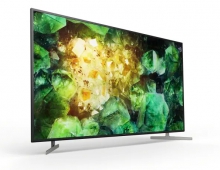
Ultra High Definition Television Nearing Reality
Ultra High Definition Television (UHDTV) took an important step towards becoming reality when experts reached agreement on most of the pertinent technical characteristics of this new standard for television.
UHDTV marks a leap forward beyond the current standards for High Definition Television (HDTV).
The experts, which include scientists and engineers from around the world, have been working together for several years in the ITU Study Group on Broadcasting Service (ITU-R Study Group 6) to jointly develop and agree on the technical specifications that will successfully create 'UHDTV'.
A demonstration of UHDTV was provided by the Japanese public service broadcaster NHK at ITU earlier this month. The screen displayed a staggering 33 Million pixels, compared to a maximum 2 million pixels for the highest quality HDTV screens on offer today.
In September 2011, a trial UHDTV link was arranged between London and Amsterdam and plans are under way to cover part of the 2012 London Olympic Games in UHDTV for screening at public venues around the world.
David Wood, Chairman of the concerned ITU Working Party in the Broadcasting Service Study Group, said, "The 'relationship' that a viewer has with television viewing is linked to the overall experience of the picture and quality of sound. The extremely high quality of UHDTV will have a definite impact on our lifestyle and on our engagement with the programmes we watch."
Christoph Dosch, Chairman of the Broadcasting Service Study Group, stated, "UHDTV promises to bring about one of the greatest changes to audio-visual communications and broadcasting in recent decades. Technology is truly at the cusp of transforming how people experience audio-visual communications."
The experts, which include scientists and engineers from around the world, have been working together for several years in the ITU Study Group on Broadcasting Service (ITU-R Study Group 6) to jointly develop and agree on the technical specifications that will successfully create 'UHDTV'.
A demonstration of UHDTV was provided by the Japanese public service broadcaster NHK at ITU earlier this month. The screen displayed a staggering 33 Million pixels, compared to a maximum 2 million pixels for the highest quality HDTV screens on offer today.
In September 2011, a trial UHDTV link was arranged between London and Amsterdam and plans are under way to cover part of the 2012 London Olympic Games in UHDTV for screening at public venues around the world.
David Wood, Chairman of the concerned ITU Working Party in the Broadcasting Service Study Group, said, "The 'relationship' that a viewer has with television viewing is linked to the overall experience of the picture and quality of sound. The extremely high quality of UHDTV will have a definite impact on our lifestyle and on our engagement with the programmes we watch."
Christoph Dosch, Chairman of the Broadcasting Service Study Group, stated, "UHDTV promises to bring about one of the greatest changes to audio-visual communications and broadcasting in recent decades. Technology is truly at the cusp of transforming how people experience audio-visual communications."





















